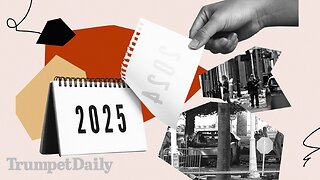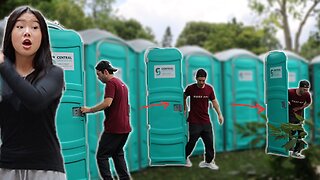Premium Only Content

Karate | Okinawan Goju-ryu | Seiunchin kata
In this sample clip, the choreography of the kata is shown with a certain speed and rhythm intended for group training as practiced within the school of Martial Mindfulness.
Except for the embusen (format/pattern) of a specific kata, the rhythm, speed, details and even execution of techniques can differ per individual according to his or her interpretation and imagination of the bunkai (combat application) and personal abilities and preferences while performing.
Within the Martial Mindfulness school, both hard and fast, soft and slow and/or combined movements are part of the kata practice. From reactive and concentrated actions, arising from our fighting spirit (resulting in a more closed tunnel vision), we try to open up again through slow movements and silence (pause/stop). Practicing slowing down and pausing (no movement) are an essential part of the exercise. Depending on your goals, you can pay more or less attention to one or the other.
The name Seiunchin or Seenchin/Seienchin means "to remove while marching calmly" and "to control, pull, and suppress."
The kata cannot be traced be traced but probably originated in China.
In Seiunchin, the shiko dachi is employed particularly often. This stance strengthens the leg muscles and is very suitable to direct the force during throwing techniques upwardly and to remain stable while experiencing resistance. This kata also employs unique techniques in which one arm/hand supports another.
Performer Lex Opdam
Origins of the shown form: Okinawa Goju-ryu karate
Lineage of the performer: Okinawan Goju-ryu karate (IOGKF-Meibukan-MMF)
Video was taken in Nijmegen, Netherlands, june 2021.
_
While these short video examples are freely accessible, they are intended for Martial Mindfulness practitioners. The context of the content is covered during the lessons and the examples shown are meant to support training.
_
-
 58:04
58:04
Kimberly Guilfoyle
4 hours agoFBI's Terror Response Failures, Live with Steve Friend & Kyle Seraphin | Ep. 185
65.6K34 -
 2:15:01
2:15:01
WeAreChange
5 hours agoMassive Developments In Vegas Investigation! UNREAL DETONATION, Shocking Details Emerge!
66.9K13 -
 54:02
54:02
LFA TV
11 hours ago2025 Is Off to a Violent Start | TRUMPET DAILY 1.2.25 7pm
5.71K -
 DVR
DVR
theDaily302
10 hours agoThe Daily 302- JJ Carrell
5.68K2 -
 2:57
2:57
EvenOut
1 day ago $0.66 earnedTHE TELEPORTING PORTA POTTY TWIN RPANK!
12.3K -
 1:02:55
1:02:55
In The Litter Box w/ Jewels & Catturd
23 hours agoAmerica Is Under Attack! | In the Litter Box w/ Jewels & Catturd – Ep. 711 – 1/02/2025
78.5K110 -
 1:45:25
1:45:25
The Quartering
7 hours agoHuge Update In Cybertruck Attack & Dark New Details From New Orleans Attacker & More!
113K57 -
 16:04
16:04
Tundra Tactical
2 days ago $2.21 earnedHow Palmetto State Armory got so BIG!
46.6K6 -
 13:41
13:41
MichaelBisping
10 hours agoBISPING: Jamahal Hill is BEEFING with EVERYONE before UFC 311?! | Hill vs Prochazka
10.9K1 -
 12:57
12:57
BlackDiamondGunsandGear
1 day agoSingle stack that takes a Double Stack Mag?
7.53K1